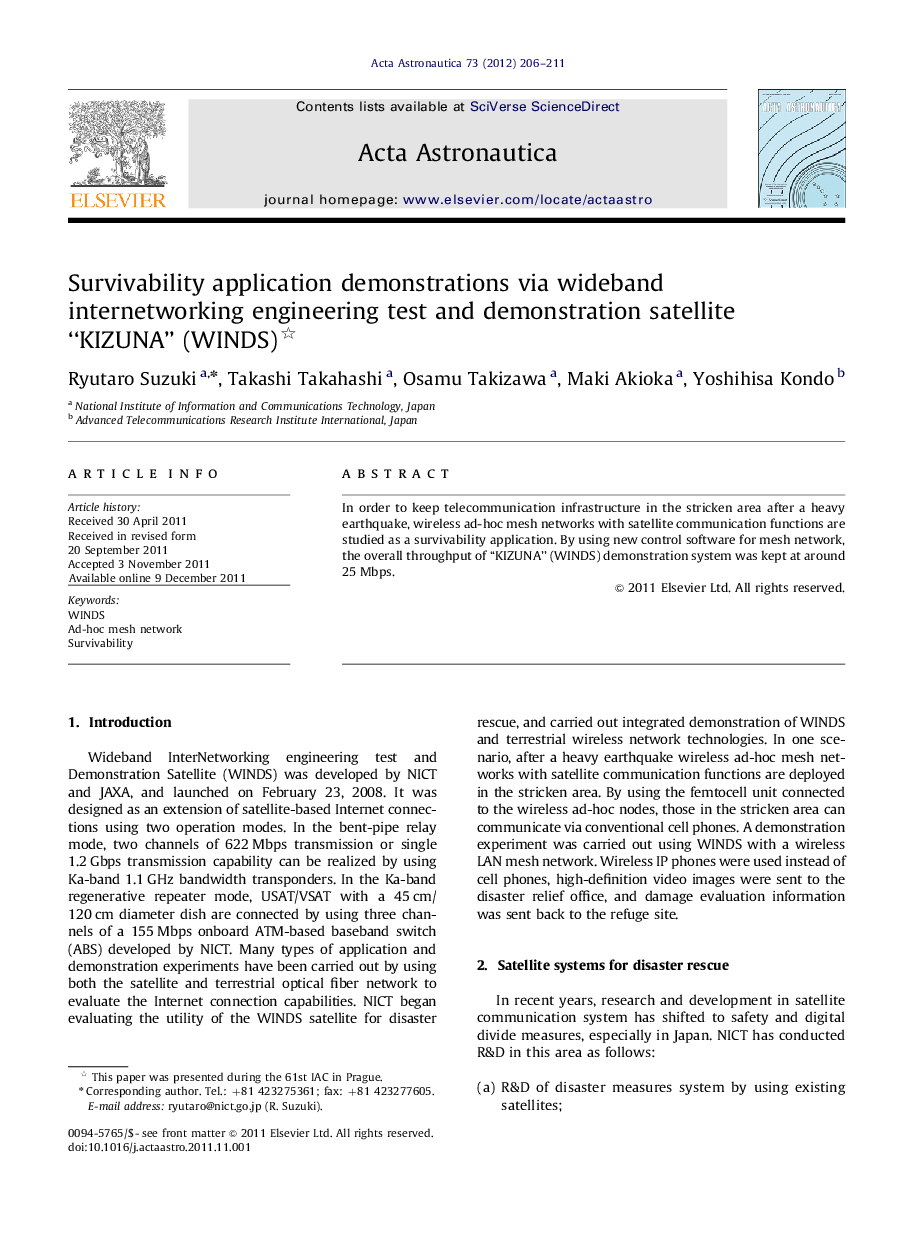| Article ID | Journal | Published Year | Pages | File Type |
|---|---|---|---|---|
| 1715362 | Acta Astronautica | 2012 | 6 Pages |
Abstract
In order to keep telecommunication infrastructure in the stricken area after a heavy earthquake, wireless ad-hoc mesh networks with satellite communication functions are studied as a survivability application. By using new control software for mesh network, the overall throughput of “KIZUNA” (WINDS) demonstration system was kept at around 25 Mbps.
▶ NICT began evaluating the utility of the WINDS satellite for disaster rescue. ▶ Wireless mesh networks with the WINDS satellite are studied as a survivability application. ▶ The stricken area and disaster headquarters can be connected through the WINDS mesh network. ▶ The overall throughput of “KIZUNA” (WINDS) demonstration system was kept at around 25 Mbps.
Keywords
Related Topics
Physical Sciences and Engineering
Engineering
Aerospace Engineering
Authors
Ryutaro Suzuki, Takashi Takahashi, Osamu Takizawa, Maki Akioka, Yoshihisa Kondo,
